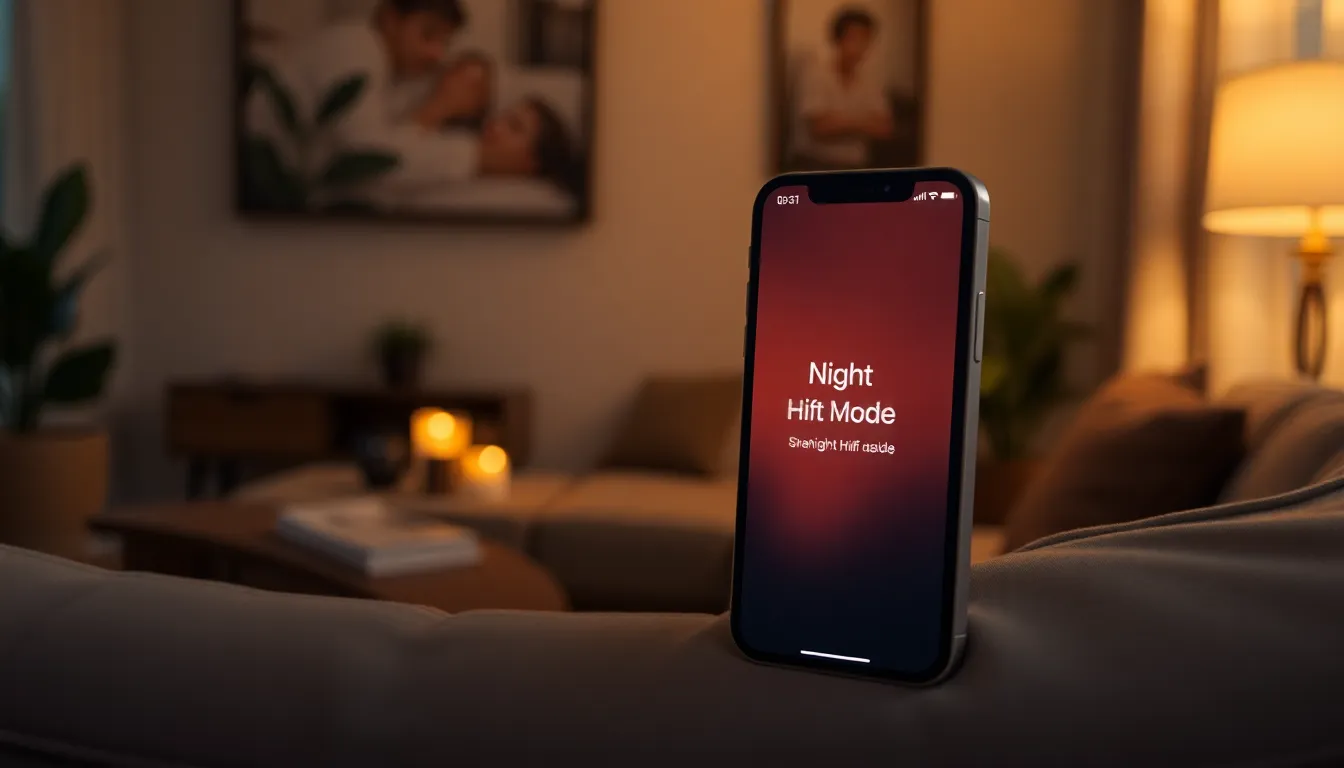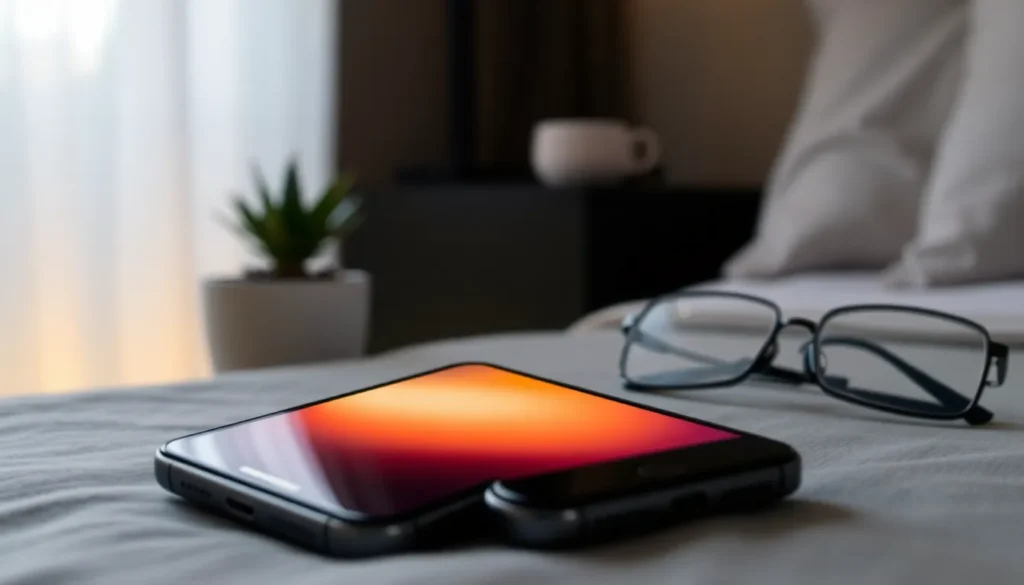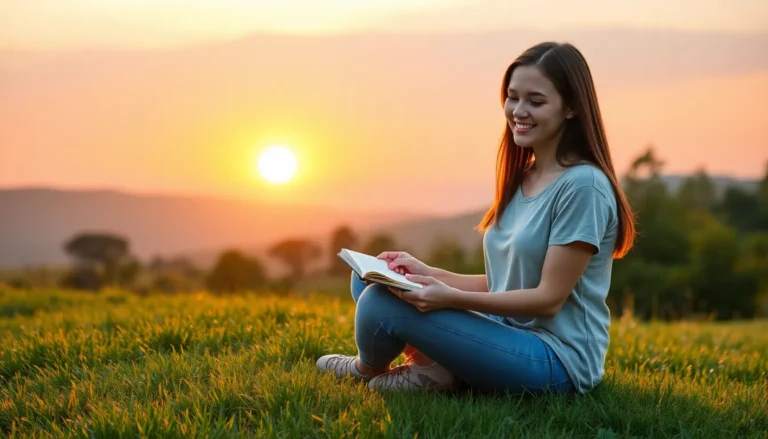Table of Contents
ToggleIn a world where screens dominate daily life, blue light has become the unwelcome guest at the digital party. It sneaks into our lives, disrupting sleep and straining eyes, all while pretending to be helpful. If you’ve ever found yourself squinting at your iPhone late at night, you know exactly what we’re talking about. But fear not! There’s a way to send that pesky blue light packing.
Understanding Blue Light
Blue light is a color in the visible light spectrum that includes wavelengths from about 380 to 500 nanometers. It’s emitted from digital screens such as smartphones and computers.
What Is Blue Light?
Blue light refers to high-energy visible light with shorter wavelengths. Sources include sunlight, LED lights, and electronic devices. Exposure to blue light can stimulate alertness but often disrupts sleep cycles when experienced during evening hours. Distinctive features of blue light set it apart include its ability to penetrate deep into the eye, potentially affecting retinal cells.
Effects of Blue Light on Health
Exposure to excessive blue light can lead to various health issues. Eye strain often develops after extended screen time and presents symptoms such as dryness and irritation. Sleep disruption frequently occurs when blue light interferes with melatonin production, making it harder to fall asleep. Research indicates increased risks of digital eye strain and potential long-term damage to retinal cells, signaling the need for effective blue light management strategies.
Features of iPhone

iPhones come equipped with features designed to reduce blue light exposure, enhancing user comfort during screen time.
Night Shift Mode
Night Shift Mode shifts the display colors to warmer tones after sunset. This adjustment helps lower blue light emission, promoting better sleep quality. Users can schedule this feature, automatically enabling it at their desired times. The adjustment alters the screen’s color temperature based on the time of day. Enabling Night Shift Mode requires a few easy steps in the settings menu. This feature effectively mitigates blue light’s adverse effects during evening device use.
True Tone Display
True Tone Display employs advanced sensors to detect ambient lighting conditions. This technology automatically adjusts screen color and intensity for optimal viewing. Changes occur seamlessly, ensuring consistent color accuracy in various lighting environments. Users notice enhanced visual comfort as the display adapts, reducing eye strain. The feature’s integration enhances user experience whether indoors or outdoors. This adaptive display technology plays a crucial role in improving eye comfort during prolonged screen usage.
How to Stop Blue Light on iPhone
Managing blue light exposure on an iPhone significantly enhances eye comfort and sleep quality. Two main features help achieve this goal: Night Shift and True Tone.
Enabling Night Shift
Activating Night Shift is straightforward. Users access Settings, then tap Display & Brightness. Next, selecting Night Shift opens options to schedule this feature. Users can set it to turn on automatically at sunset or customize their timeline. Once enabled, the screen adapts to warmer colors, reducing blue light emission. Night Shift improves sleep quality by minimizing disruption to melatonin production.
Adjusting True Tone Settings
Adjusting True Tone settings enhances visual comfort. This feature automatically alters the display based on ambient light conditions. Users navigate to Display & Brightness in the Settings app. Then, enabling True Tone allows the screen to display more accurate colors, ensuring a pleasant viewing experience. Utilizing True Tone helps minimize eye strain during prolonged usage, making it easier to use devices without discomfort.
Additional Methods to Reduce Blue Light
Exploring additional methods can enhance blue light reduction. Users can employ various strategies to further limit their exposure.
Using Third-Party Apps
Third-party apps designed for blue light reduction can provide customizable features. These applications often offer filters that adjust screen colors without altering the device settings. Users can find apps with specific features, such as adjustable intensity levels, time schedules, or even a dark mode setting. Many apps also offer reminders for screen time and eye breaks, promoting healthier usage habits. Choosing reputable apps with positive reviews ensures effectiveness and safety.
Employing Screen Protectors
Screen protectors specifically designed to block blue light add another layer of defense against eye strain. Available in various styles, these protectors filter harmful wavelengths while preserving screen clarity. Users can easily apply them to their devices at home or purchase pre-installed models. Many screen protectors also reduce glare, enhancing viewing comfort in bright environments. Selecting a high-quality protector ensures durability and longevity, making it a smart investment for eye health.
Managing blue light exposure on an iPhone is essential for maintaining eye comfort and promoting better sleep. By utilizing built-in features like Night Shift and True Tone Display users can significantly reduce the negative effects of blue light. These simple adjustments create a more pleasant viewing experience and help protect against eye strain.
Incorporating third-party apps and blue light filtering screen protectors further enhances this protective strategy. With these tools at their disposal, users can enjoy their devices while minimizing potential harm. Prioritizing blue light management is a proactive step toward healthier screen time habits.







